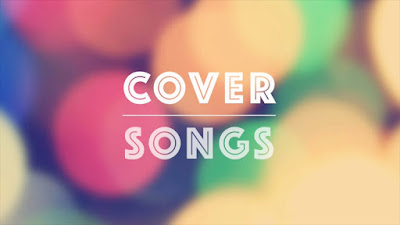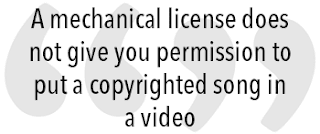Cover Songs: How to Properly License a Cover Song for Distribution
Music rights are complex. There are a lot of factors that go into play when it comes to licensing music and other creative works, such as covers of songs.
Covering a song is actually not as complex as it seems, yet it's not as clear cut as you may think, either. The legality behind creating or authorizing one, is often convoluted. However, in this post, I'll break down exactly what it means to cover a song & what you would need to do to legally release a cover of a song on platforms such as iTunes, Spotify, SoundCloud, and YouTube.
What is a cover song?
Simply put, when you cover any song that doesn't originally belong to you: you didn't write it or originally record it, you are creating a 'cover song'. You are 'covering' someone else's creative work & you need to get permission to do so.
What is needed before releasing a cover song?
Short answer? Get the proper licenses. The type of license you will need to release the cover song will depend upon how you release it: just an audio release through platforms such as iTunes, SoundCloud & Spotify? Then a mechanical license will suffice. However, if you plan on adding YouTube videos to the mix, you'll need, both, the mechanical & the synchronization license.
Mechanical Licenses
Mechanical licenses grant you the rights to reproduce and distribute copyrighted musical compositions. They allow you to distribute through platforms such as iTunes, Spotify, Tidal, SoundCloud, and others. You can secure a mechanical license through the Harry Fox Agency (HFA) and Loudr, or go directly to the song’s publisher and simply ask about securing a mechanical license for your cover.
You can either secure the licenses yourself, or you can let HFA or Loudr do that for you. Yes, you can also register your own compositions with the HFA or Loudr so they can manage issuing mechanical licenses and collecting royalties for covers of your original compositions.
But what about music videos?...you ask.
Mechanical Licenses
Mechanical licenses grant you the rights to reproduce and distribute copyrighted musical compositions. They allow you to distribute through platforms such as iTunes, Spotify, Tidal, SoundCloud, and others. You can secure a mechanical license through the Harry Fox Agency (HFA) and Loudr, or go directly to the song’s publisher and simply ask about securing a mechanical license for your cover.
You can either secure the licenses yourself, or you can let HFA or Loudr do that for you. Yes, you can also register your own compositions with the HFA or Loudr so they can manage issuing mechanical licenses and collecting royalties for covers of your original compositions.
But what about music videos?...you ask.
Synchronization Licenses
This license grants you rights to sync (see where it got its name from?) unoriginal music to a visual output. Simply put, you have the right to use the cover song in a video you create & enables you to upload the video to platforms like YouTube or Vimeo.
These licenses don't have a concrete fee structure and depend upon many factors, such as song popularity, length of the song & how it will be used among many other factors.
Synchronization licenses can be secured directly from the publisher.
Still don't get it?
Copyright infringement is a serious infraction and can land you some pretty hefty fines and even jail in habitual circumstances. More times than not, indie artists aren't equipped with the legal defense to assist them in navigating the waters of rights management.
My advice?
If you are questioning it, then ask beforehand. Also, do your research. There is a wealth of knowledge at our fingertips and no one utilizes it because copyright infringement is STILL a thing.
But, nonetheless, have questions for me about releasing a cover song? Or maybe about copyrights in general? Let me know in the comments!
Until next time...
xoxo,
Rachel Marie
The Underground Artistry
Another site...not just another blog.







No comments:
Post a Comment